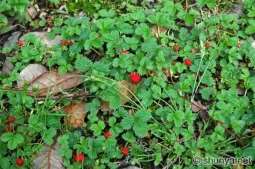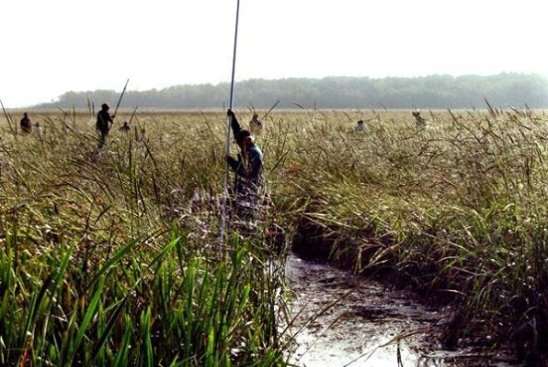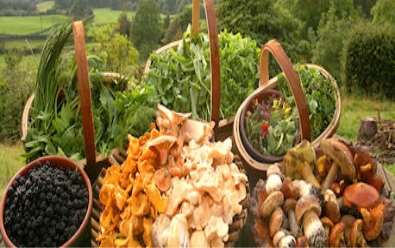History of Food
WILD FOOD
HISTORY
About 8000 BC gathering was the main basis of food. Round 10,000 BC, in the New Stone Age, people started farming, and then spent a smaller amount of period gathering. Present they cultivated grain as a replacement for gathering it. People also started to grow figs and lentils and parsnips and peas. But they kept back on pick many of other wild foods like berries, apples, pears, olives, and nuts. They collected snails from the bushes. By the Bronze Age (round 3000 BC) people planted many other kinds of food and collected less. People of Bronzed Age Cultivated grains and vegetables and also planted olive trees and fruit trees. Still, people pick berries, herbs, mushrooms, and nuts in the wild. Actually, the condition has not changed so much from past till now. Nowadays, so many people still collecting nuts and berries and they also still gather herbs and mushrooms.
It’s seem like collecting is a quite lazy, unsystematic kind of method to get foodstuff, and they don’t want much information. But truly it is very complex. They have to knowledge about where are the plants like where the berry bushes and nut trees are developing. They have to know growing conductions of each of them will come ready (ripe), so that they don’t miss to collect all the berries. They have to organize stuffs so that they are in the correct place at the correct time. Then also, they have to pick the berries they also have to preserve it and collect it in the store: they have to separate the dry the berries and the grains and herbs and the fruits, and pickle the olives. Mainly people who grow the most of their food from gathering and have a fixed way that they travel round every year, so that they will be at the right place at the right time period to get ripe nuts from the nut trees and at the olives when the olives become ready to collect.
WILD STRAWBERRIES

(Reference: – )
BACKGROUND
Non-commercial wild food contains fish, insects, animals and plants that are harvested or hunted for own feeding. Such collecting of wild food stuff is not matter to observing or risk organization in the way that commercially presented food. It is analysis of non-commercial wild food stuff undertaken by NZFSA. NZFSA decided that wild food is risk free to the public health in New Zealand. But, the review did expose a lack of information about harvesting and eating patterns of wild food and also how to safely harvest food (plants) and consume wild foodstuff, and also about the bacteria’s like the sources of foodborne illness. It is based on the presently available records. The three wild food groups with the maximum risk status are deer, shellfish and pigs. NZFSA’s Strategy for Relating MÄÂori in the Food Safety and Consumer Protection Issues will support the application of the Wild Food Project for MÄÂori peoples. NZFSA has established the educational resources for the Maori communities – a Wild Food Safety DVD and two opposite booklets, ‘Food Safety for Seafood Gatherers’ and ‘Food Safety for Hunters’. NZFSA displays that the shellfish toxicity concluded the Marine Bio toxin Programmed, so that customers of non-commercial shellfish can be advised when shellfish in their zone then it is unsafe to have it and collect it. The other two foods (deer and pigs) that were recognized as potential high risk.

(Reference: – )
CULTURE OF WILD FOOD
Still there were associations tries to describe “wild culture”, there was not any accepted definition of it. Smith chosen his colleagues and audiences to find the meaning of wild culture’s throughout the titles of the tasks in which it looked, where the social background was at play; that is, that it existed a serious-sounding and perchance honest academic magazine printed by a preserving culture with a lengthy name, all devoted to a topic no one recognized anything about. Assigning the serious and the non-serious in a method that made logic and interested became part of the artistes’ work. Previously there was Smith’s fresh description of wild culture (“the articulated ecotone between what people do and why they can’t control in nature”), no single clarification happened around which the S.P.W.C artists” effort was completed. Some people said that it was the vagueness of the knowledge, the incapability to title it down that made it so eye-catching. In the lack of real explanation, Smith open a metaphor, which he has freshly changed: On the surface of a clear painting is the human physical reality that is portion of our ordinary life, and in the related are basics of nature, unseen and seen, that are very much active but that people aren’t always alert of, whether out of apathy, convenience, ignorance, or any state of blackout or selfishness that donates to the interruption from our original history and our current psychic hold on the home land. Wild culture is the two planes, background and foreground, seen together.

(Reference: – )
INNOVATIONS
Sparkling soft drinks are also as a great demand in Africa. To build additional growth on this market, WILD tastes and Specialty Ingredients resents novelties featuring new flavor profiles created on its original fermentation equipment. WILD tastes and Specialty Ingredients ideas for still drinks also give builders possible for additional growth. Food & drinks technology in Africa, WILD tastes and Specialty Ingredients shows its competency in this part with product ideas counting emulsion-based decisions as well as milk and juice variations. These answers meet the demands of customers in Africa who want premium-quality drinks which have a flavorful taste. The most popular flavors here are tropical fruits like guava and mango. In adding, WILD Flavors and Specialty Ingredients displays non-alcoholic border drink ideas such as juice-based drinks with piña colada and sangria flavors.
PRODUCTION METHOD
The cultivated technique called “Wild Farming”. It is a growing different to “factory farming”. It consists of implanting crops that are extremely associated and kind to the natural ecosystem. It includes intercropping with inborn plants, resulting the contours and geography of the land, and backup to the local food chains. The goal is to produce large crop yields, while still indorsing a healthy environment. Wild farming is a reaction against the control of factory farming. Up till the mid-20th century, farming crop yields depend on natural inputs such as natural soil resources, rainfall patterns, built-in biological control mechanisms and recycling of organic matter. Presently, agricultural performs have been conventionalized to contain large mono cropped fields and use of synthetics: fertilizers and pesticides. Avoiding the conventional farming practices, wild farming adopts many practices from sustainable agricultural systems such as Greywater systems, permaculture, forest farming, and agroecology.
SOCIAL INFLUENCES OF WILD FOOD
Community effects have been shown to be very significant to overcome food neophobic in young children. But, there is no. experimental proof about whether social effects on food acceptance are specific, that. is if models eating the same food as the child are more effective in sponsoring food acceptance than .eating a different food. We measured children’s behavior towards novel foods when an adult model [A] was not eating (Presence condition), [B] was eating a food of a Different color (Different color condition), and [C] was eating a food of the same color (Same color condition). We tested 26 children (ages 2-5 years old) enrolled from The Pennsylvania State University day care amenities. Grades show that kids accepted and ate their novel food additionally in the same color form rather than different color and in the Presence conditions. Hence, in young children food acceptance is promoted by specific social influences. These data show that children are more love to eat new food if others are eating the same type of food than others are merely present or eating another kind of food.